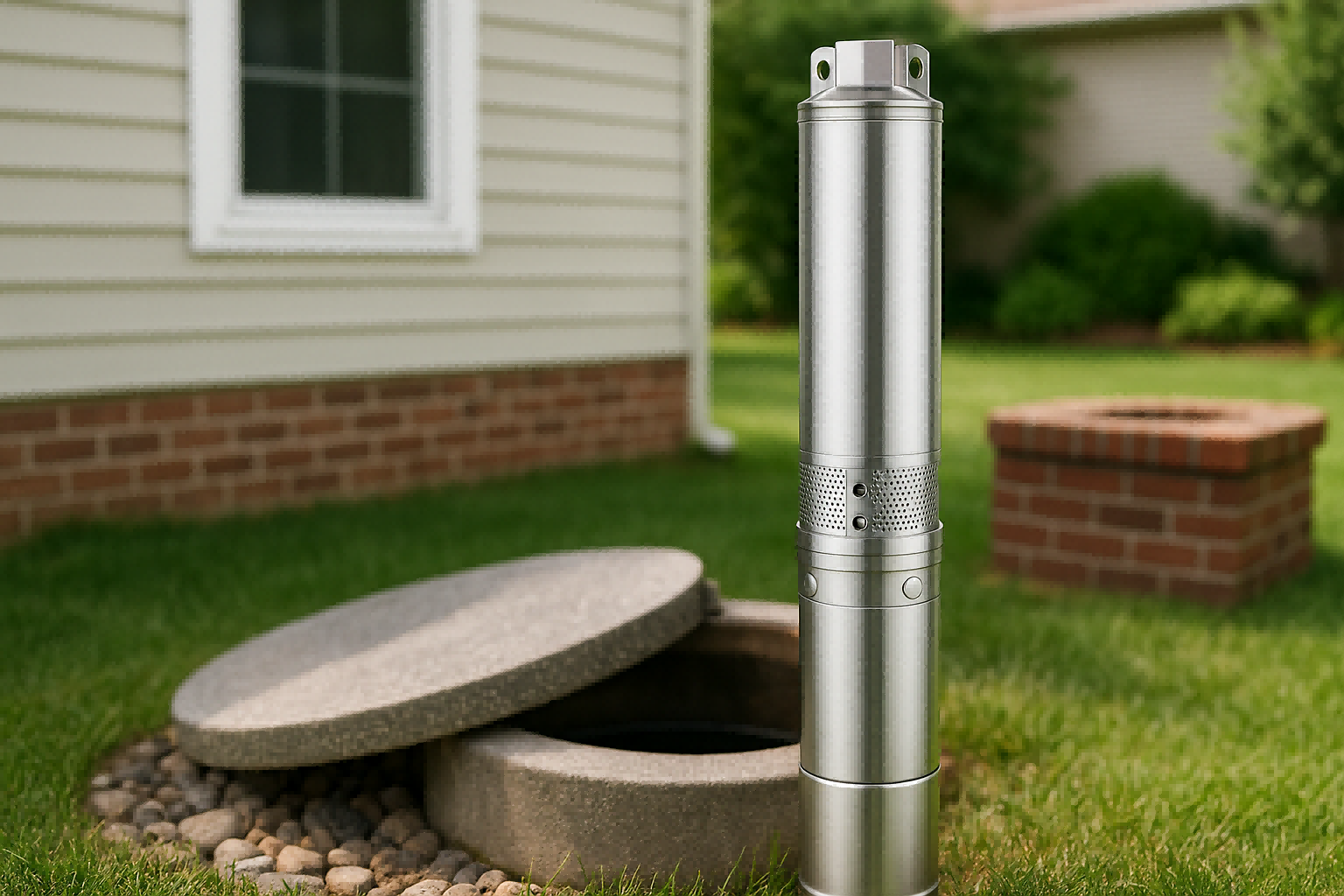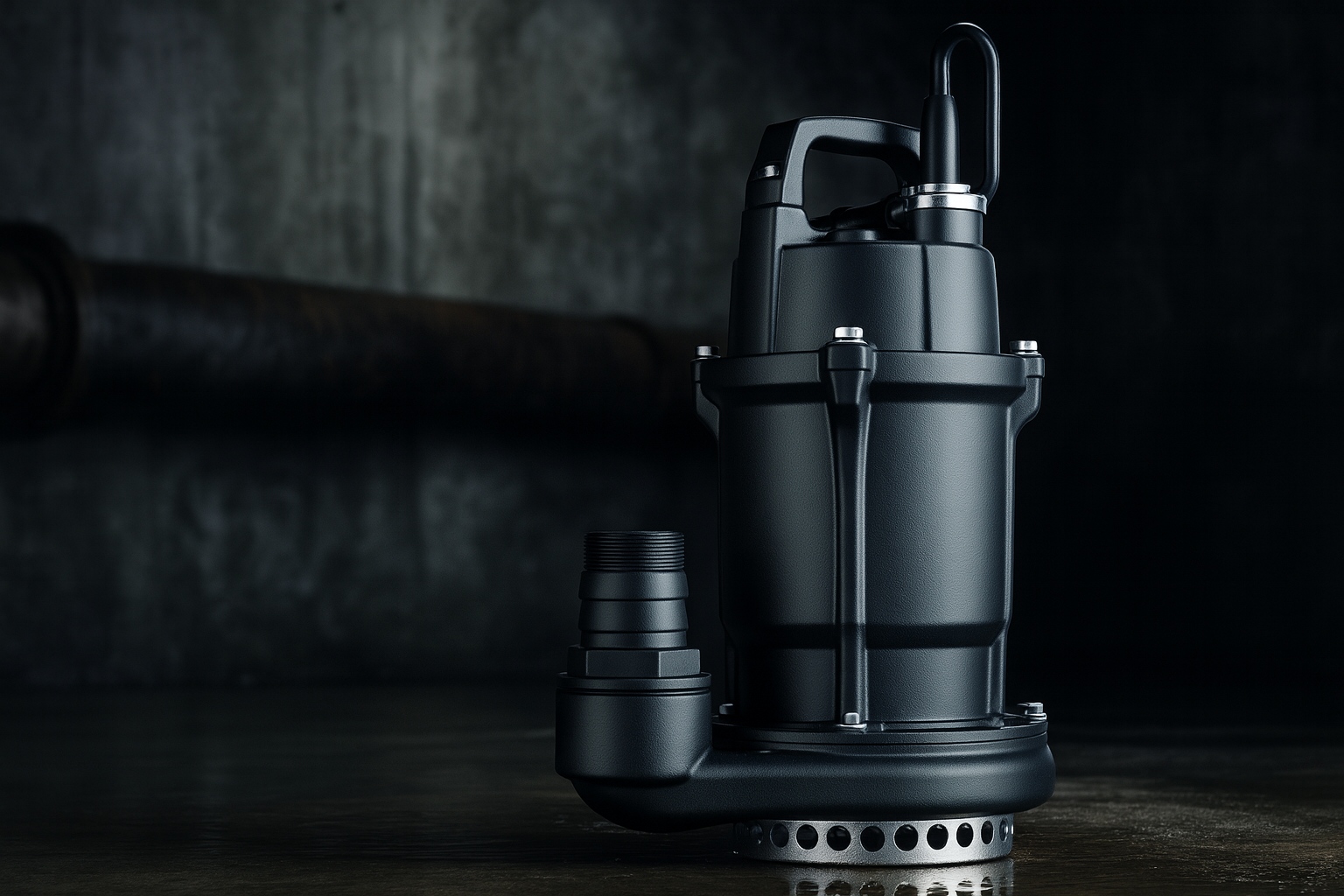Struggling to figure out if a 1.5 hp pump is powerful enough for your needs?
The answer isn't a single number.
A 1.5 hp submersible pump's lifting height, or head, ranges from 30 feet for high-volume models to over 500 feet for deep well pumps.
The exact performance depends entirely on its design, balancing factors like flow rate and maximum head.
Understanding this balance is key to choosing the right pump.
A pump is not just about horsepower.
It's a complete system where power is just one part of the equation.
To make an informed decision, you need to look beyond the motor size and consider the specific type of pump and its performance curve.
This guide will break down the crucial factors that determine a pump's true lifting capability.
We will explore how pump type, maximum head, flow rate, and pressure all work together.
This will help you select a pump that delivers the water you need, exactly where you need it.
Factors influencing lifting height
Confused by pump specifications and what they mean for your project?
You're not alone.
The lifting height of a 1.5 hp pump is not a single number but is influenced by several critical factors.
Understanding pump type, maximum head, flow rate, and pressure is essential to selecting a pump that meets your specific requirements without wasting energy or money.

Deeper Dive: The Four Pillars of Pump Performance
Choosing a pump based on horsepower alone is a common mistake.
A 1.5 hp motor can be configured in many ways, leading to vastly different outcomes.
To truly understand how high a pump can lift water, you must look at the interplay of four key elements.
Each one tells a part of the story about the pump's capabilities and its suitability for your application.
Let's break down these factors.
Pump Type
The intended application is the single biggest factor.
Manufacturers design pumps for specific jobs.
A pump built to drain a basement is fundamentally different from one designed to supply water to a multi-story building.
- Sump Pumps: These are designed for dewatering tasks. They prioritize moving a large volume of water quickly over a short vertical distance. Their goal is high flow rate, not high pressure.
- Deep Well Pumps: These are built for high-pressure applications. Their primary job is to lift water from significant depths, requiring them to generate substantial pressure to overcome gravity and friction. They typically have a lower flow rate compared to a sump pump of the same horsepower.
- Booster Pumps: These are surface pumps designed to increase pressure within an existing plumbing system. While not submersible, they follow the same principles, trading flow for pressure to supply water to upper floors or distant outlets.
Maximum Head
Maximum head is the highest vertical distance a pump can push water when the flow rate is zero.
It is a crucial specification found on every pump's performance chart.
Think of it as the pump's absolute vertical limit.
However, this number can be misleading.
You will never operate a pump at zero flow.
As you start to draw water (increase the flow rate), the achievable head decreases.
This relationship is visualized on a pump performance curve.
| Flow Rate (Gallons Per Minute) | Achievable Head (Feet) |
|---|---|
| 0 GPM | 550 ft (Max Head) |
| 10 GPM | 450 ft |
| 20 GPM | 300 ft |
| 30 GPM | 100 ft |
This table is an example and varies by pump model.
Flow Rate
Flow rate, measured in gallons per minute (GPM) or liters per minute (LPM), is the volume of water the pump can move in a given time.
There is an inverse relationship between flow rate and head.
- A pump designed for a high flow rate will have a lower maximum head.
- A pump designed for a high head will have a lower maximum flow rate.
You must determine your required flow rate first.
How many faucets, showers, or irrigation heads will be running simultaneously?
Once you know your required flow rate, you can check the pump curve to see if it can deliver that volume at your required head height.
Modern systems with Variable Frequency Drives (VFDs) can intelligently manage this relationship, adjusting motor speed to provide constant pressure regardless of fluctuating flow demands, which optimizes both performance and energy efficiency.
Pressure
Pressure is the force that moves the water.
It's directly related to head.
For every foot of vertical lift, you need about 0.433 PSI (Pounds per Square Inch) of pressure to overcome gravity.
Conversely, 1 PSI can lift a column of water 2.31 feet.
To calculate the total pressure a pump needs, you must consider the Total Dynamic Head (TDH).
This is more than just vertical lift.
TDH = Vertical Lift (Static Head) + Friction Loss
- Vertical Lift: The physical height difference from the water source to the highest outlet.
- Friction Loss: The pressure lost due to friction as water moves through pipes, fittings, elbows, and valves. Longer pipe runs and smaller diameters create more friction.
A 1.5 hp pump's total head capability must be greater than your calculated TDH to ensure adequate pressure and flow at the destination.
Neglecting friction loss is a frequent cause of undersized pumps and poor water pressure.
Examples of 1.5 hp pump capabilities
Feeling unsure which type of 1.5 hp pump matches your required lift height?
The difference can be dramatic.
The capabilities of a 1.5 hp pump vary widely based on its specific design and purpose.
A utility pump might only lift water 35 feet, while a specialized deep well model can exceed 500 feet.
Knowing these examples helps set realistic expectations for your project.
Deeper Dive: Matching Power to Purpose
Horsepower is a measure of the motor's power output, but it doesn't tell you how that power is used.
The pump's hydraulic end—its impellers and casing—determines how the motor's rotational energy is converted into water pressure (head) and volume (flow).
A 1.5 hp motor can be paired with a high-flow hydraulic end or a high-pressure hydraulic end.
Let's explore the real-world performance you can expect from different types of 1.5 hp pumps.
Utility and Sump Pumps
These pumps are the sprinters of the pump world.
Their job is to move large volumes of water over short distances.
- Primary Goal: High flow rate for rapid dewatering.
- Typical Head Range: Maximum lift is generally low, often around 33 to 36 feet.
- Common Uses: Draining flooded basements, emptying pools, or transferring water between tanks at similar elevations.
The impellers in these pumps are designed to be open, allowing for some small solids to pass through and maximizing the volume of water moved with each rotation.
They are not designed to build the high pressure needed for deep wells or multi-story buildings.
Deep Well Submersible Pumps
These pumps are the marathon runners.
They are engineered to generate immense pressure to lift water from hundreds of feet below the ground.
- Primary Goal: High head (pressure) to overcome extreme vertical distances.
- Typical Head Range: A 1.5 hp deep well pump can have a maximum head rating of 270 feet, 300 feet, or even up to 550 feet for specific high-head models.
- Common Use: Supplying potable water for homes, farms, and businesses from a deep underground well.
To achieve this, they use a series of stacked impellers and diffusers.
Each stage adds more pressure, incrementally lifting the water higher.
This multi-stage design sacrifices high flow rates for the ability to reach extreme heights.
High-Efficiency Booster Pumps
While typically not submersible, modern surface-mounted booster pumps with 1.5 hp (1100W) motors represent a third category focused on intelligence and efficiency.
These systems are designed to improve pressure in municipal water lines or from storage tanks.
- Primary Goal: Maintain constant, stable pressure despite changes in demand.
- Performance: They combine moderate head and flow with smart controls. A 1.5 hp model might have a maximum head of around 180 feet (55 meters) and a max flow of 50 GPM (12 m³/h), but its real strength is its ability to adjust.
These pumps use Variable Frequency Drives (VFDs) to precisely control motor speed.
When only one faucet is open, the pump runs slowly, saving energy.
When multiple taps are used, it speeds up instantly to maintain the set pressure. This technology offers a perfect balance of performance, energy savings, and system longevity.
| Pump Type | Primary Goal | Typical Max Head (1.5 hp) | Best Use Case |
|---|---|---|---|
| Sump/Utility Pump | High Flow Rate | 30–40 feet | Draining, transferring large water volumes |
| Deep Well Pump | High Head | 270–550+ feet | Lifting water from deep underground wells |
| VFD Booster Pump | Constant Pressure | ~180 feet (Variable) | Boosting existing pressure in buildings |
Conclusion
A pump's lift height depends on its type, head, and flow rate, not just its horsepower.
Proper selection requires understanding your total dynamic head and flow needs.
FAQ
What is the difference between pump head and lift?
Head is the maximum height a pump can push water, while lift refers to the suction height. They both contribute to the pump's total work.
How do I calculate the total dynamic head (TDH)?
TDH is the sum of the vertical lift from the water source to the outlet, plus all friction losses from pipes, valves, and fittings.
Can a 1.5 hp pump run a whole house?
Yes, a correctly specified 1.5 hp deep well or booster pump can easily supply a standard single-family home if matched to the well depth and household demand.
What is a pump performance curve?
It's a graph showing the relationship between a pump's flow rate (horizontal axis) and its head (vertical axis), helping you select the right pump for your needs.
How much does a 1.5 hp water pump lift?
A 1.5 hp water pump's lift varies greatly. Sump pumps lift around 35 feet, while deep well submersible pumps can lift water over 500 feet.
What is the suction capacity of a 1.5 HP pump?
The theoretical maximum suction lift for any surface pump at sea level is about 34 feet, but in practice, a good pump manages around 25 feet.







